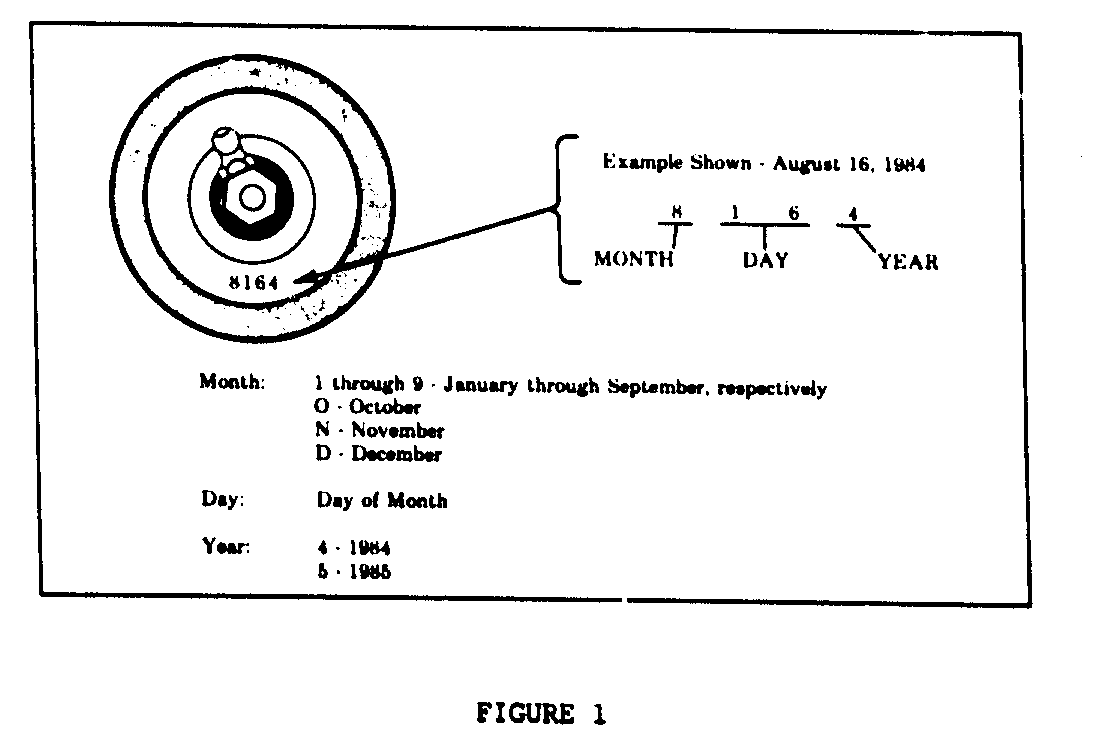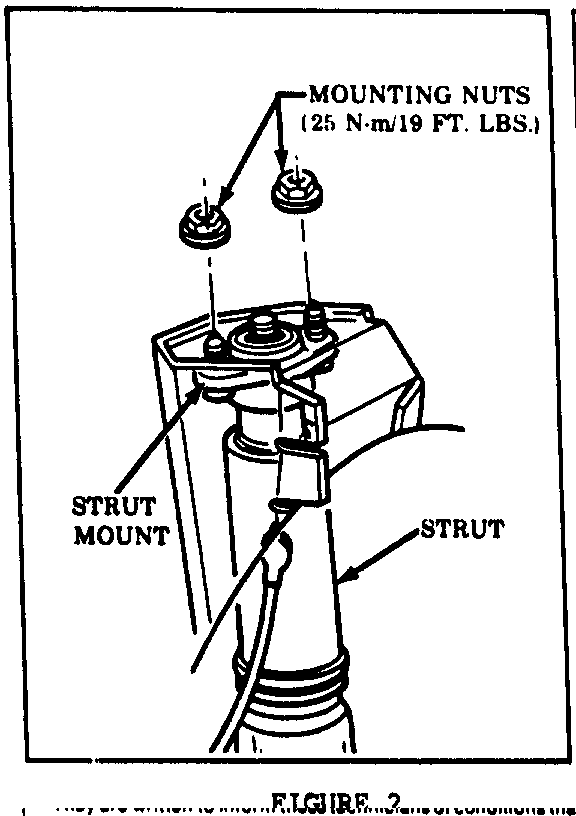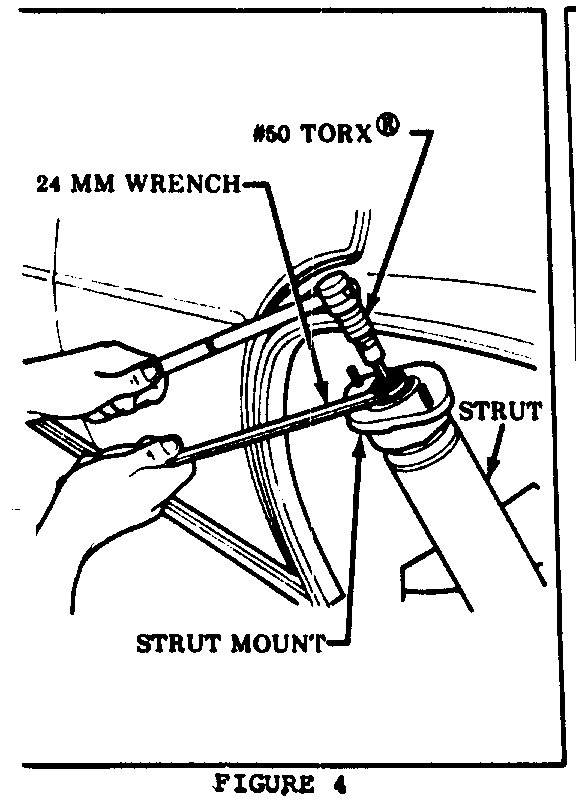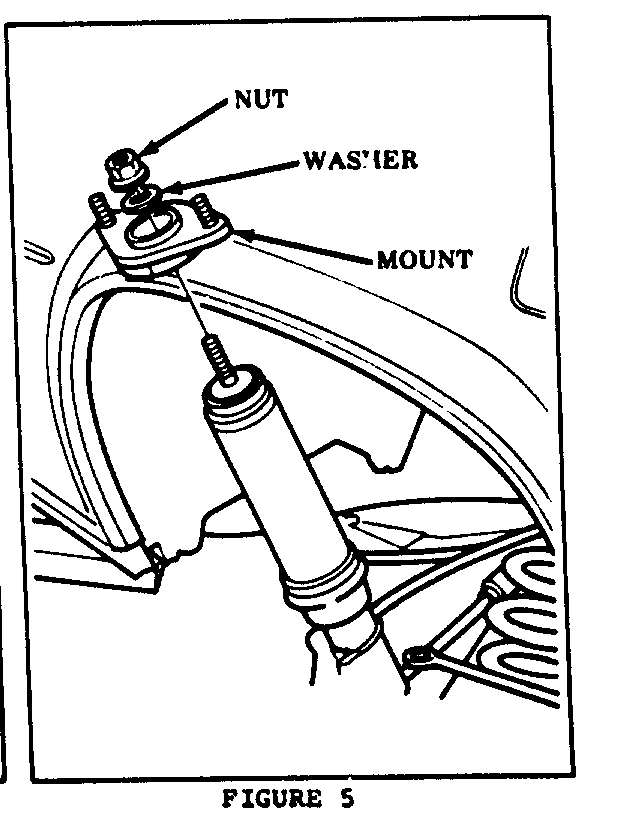REVISED:'LOOSE LUMBER' NOISE REPL.LOWER BALL JOINTS/STRUTS

VEHICLES AFFECTED: 1985 'C' Series
Some 1985 Front Wheel Drive 'C' Series may experience a 'thumping', 'clunking' or 'loose lumber' noise from the trunk or rear suspension areas when driving over small bumps (i.e., washboard road surfaces, rough/broken pavement, etc.). This noise may be more noticeable in colder ambient temperatures (less than 0 deg.C 32 deg.F).
If this condition is encountere, first inspect the rear suspension components and fasteners for proper installation and torque specifications. Check the Electronic Level Control (ELC) system for proper operation. If all suspension components are properly installed and the ELC system is working properly, the following steps should be taken:
A. Non-Sleeved Lower Control Arm Ball Joint ---------------------------------------- 1. Inspect both rear lower control arm ball joint date codes. Each ball joint is stamped with a four digit date code, located on the lower ball joint cover near the grease fitting. The date code describes the month, day and year the ball joint was manufactured, and may be interpreted as shown in Figure 1.
2. Ball joints with date codes 6204 (June 20, 1984) and later were produced with a nylon sleeve for noise reduction. Ball joints with date codes earlier than 6204 should be replaced with service ball joint kit, GMWDD P/N 9769581. Except for date code information, there is no visible difference between sleeved and non-sleeved ball joints.
B. Upper Strut Mount Noise ----------------------- Replace both rear upper strut mounts using GMWDD mount kit, P/N 22062510. Each kit contains one replacement mount (identified by a daub of orange paint) and a complete set of mounting hardware. Two mount kits are required.
The following procedure should be used for strut mount replacement:
Removal
1. Raise car on frame contact hoist. Allow rear control arms to hang free.
2. Place a short jack stand (2'-2 1/2') under rear control arm. Lower hoist so that weight of car loads rear spring.
3. Remove wheel and tire assembly.
4. Disconnect stabilizer bar from knuckle bracket.
5. Disconnect ELC air tube from strut fitting.
6. If car is equipped with the Delco-Bose premium sound system, remove the spare tire and lower speaker enclosures from inside of trunk.
7. Remove left and right inside trunk trim as required to gain access to top strut mount nuts and remove nuts. See Figure 2.
8. Compress strut by hand. Swing strut and knuckle assembly outward away from edge of wheelhouse by pivoting on lower control arm ball joint. See Figure 3. Do not loosen strut-to-knuckle anchor bolts. If these bolts are loosened, a wheel alignment must be performed after reinstallation of strut.
9. Note orientation of upper mount on strut. New mount must be installed in exactly the same position.
10. Remove upper strut mount and washer from strut rod by holding strut rod with a T50 torx tool and turning the prevailing-torque nut with a 24mm box end wrench. See Figure 4.
Installation
1. Place new mount on strut rod in same position as old mount.
2. Install the new prevailing-torque nut and washer (included in mount kit) on strut rod. See Figure 5.
3. While holding nut with box end wrench, turn strut rod with T50 torx tool. Tighten to 85 N.m (62 ft. lbs.).
4. Move strut and knuckle assembly into position in strut tower.
5. Extend strut upward by hand, positioning upper mount studs in holes in top of strut tower.
6. Install new upper strut mount nuts and washers (included in mount kit). Tighten to 25 N.m (18 ft. lbs.).
7. Install trunk trim.
8. Install ELC air tube.
9. Connect stabilizer bar to knuckle bracket. Tighten to 18 N.m (13 ft. lbs.).
10. Install wheel and tire assembly.
11. Raise car. Remove jack stand.
12. Lower car.
13. Pressurize the air adjustable rear struts by grounding the yellow test lead at the ELC compressor. All compressor to run for approximately 15 seconds. This ensures that the strut air sleeves are filled with residual pressure.





General Motors bulletins are intended for use by professional technicians, not a "do-it-yourselfer". They are written to inform those technicians of conditions that may occur on some vehicles, or to provide information that could assist in the proper service of a vehicle. Properly trained technicians have the equipment, tools, safety instructions and know-how to do a job properly and safely. If a condition is described, do not assume that the bulletin applies to your vehicle, or that your vehicle will have that condition. See a General Motors dealer servicing your brand of General Motors vehicle for information on whether your vehicle may benefit from the information.
